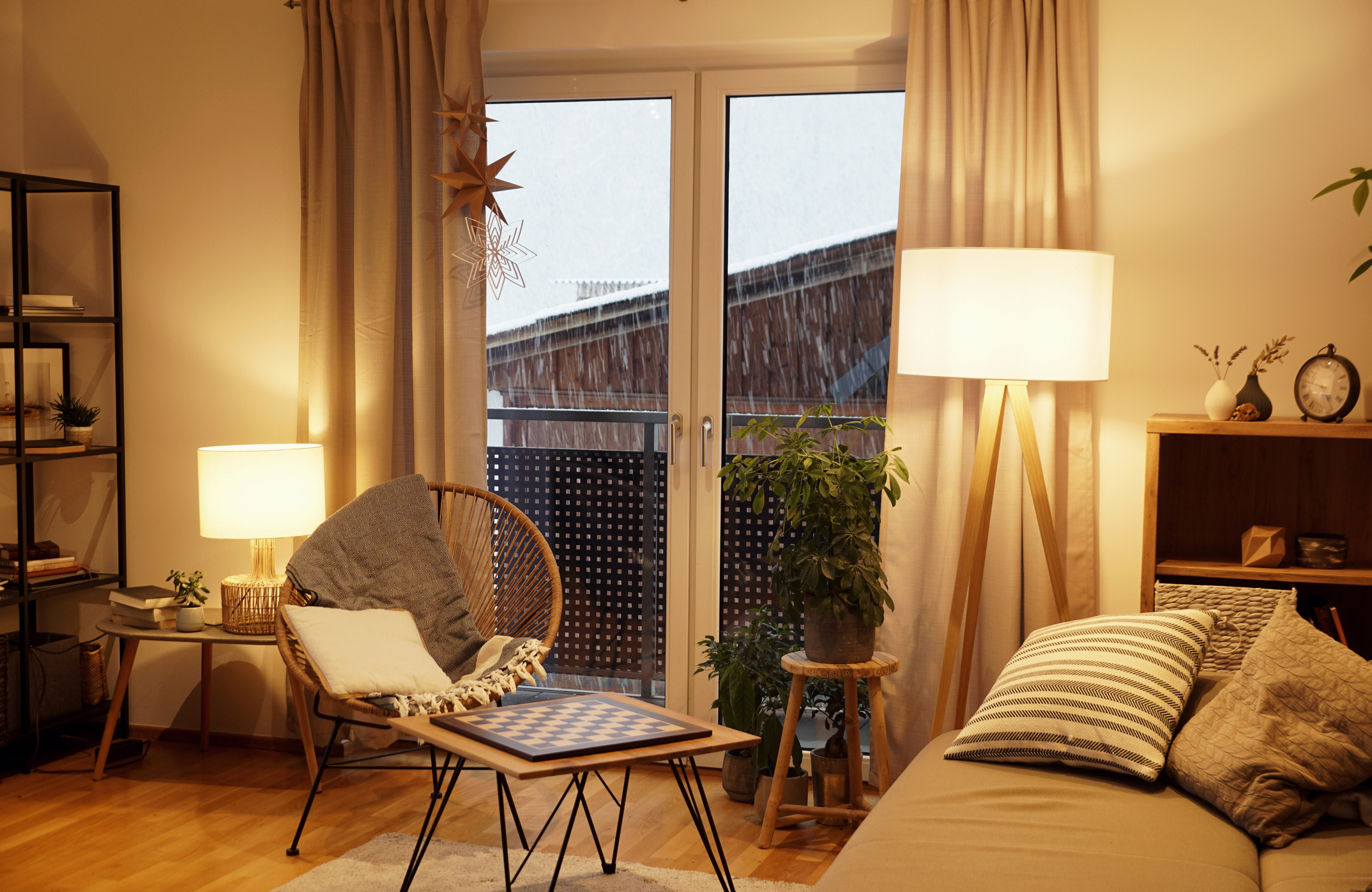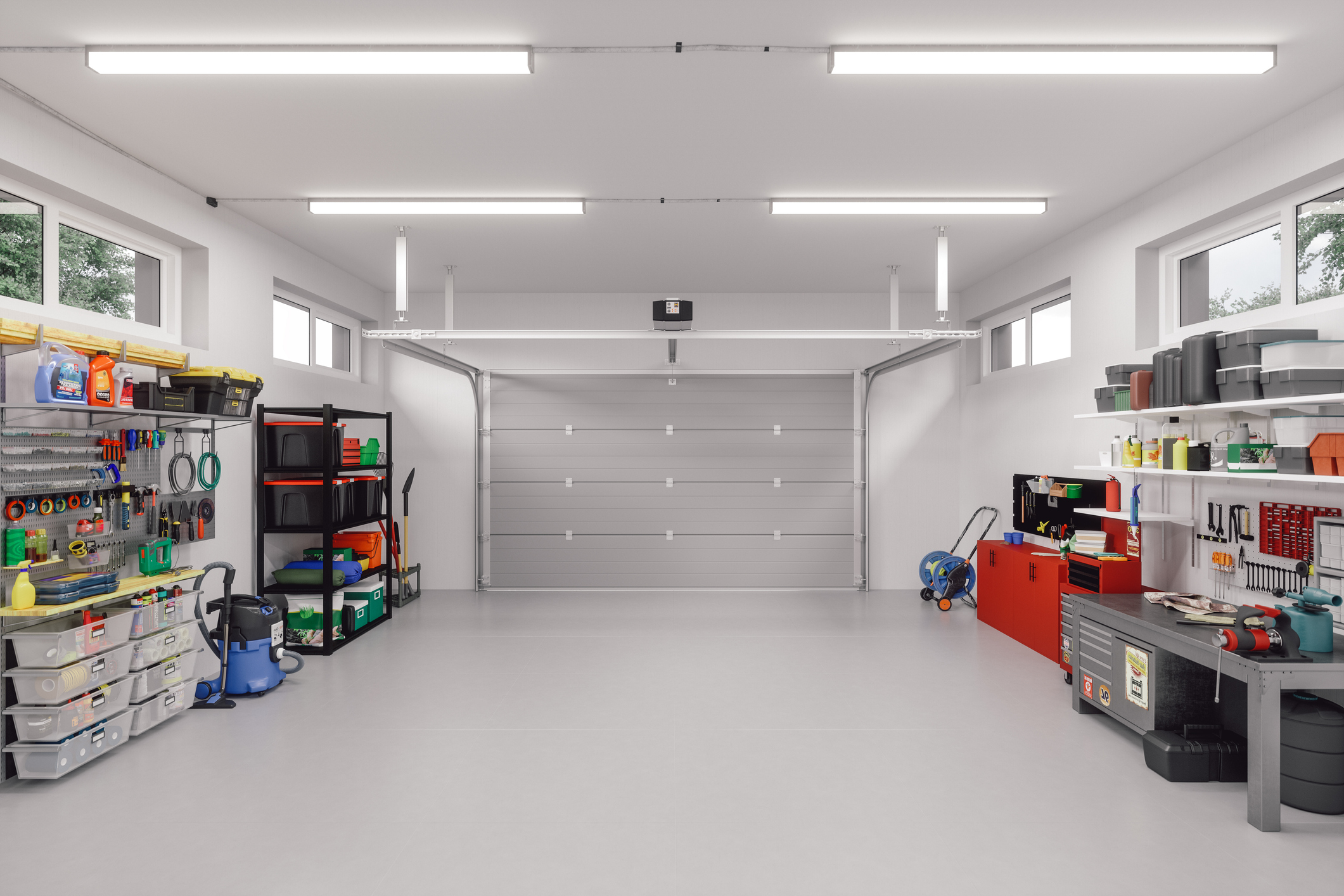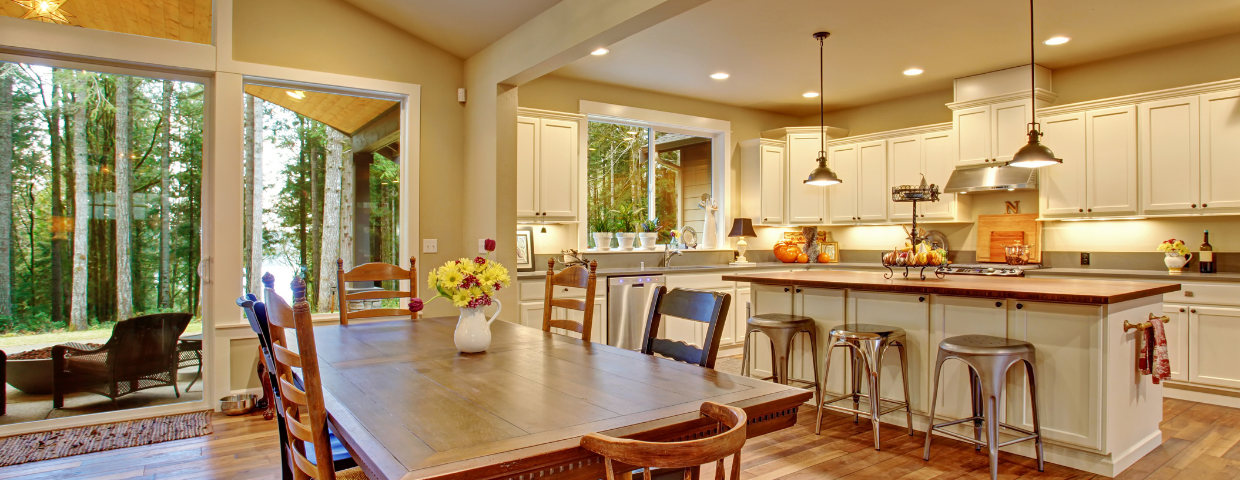The right lighting can give your home the quality and mood you’re looking to achieve. Knowing about the different temperatures of light, lighting types, and how to blend lighting elements will help you narrow down your choices and find the best fixtures for your home.
How to Find the Right Lighting for Your Home
Before taking a trip to the hardware or lighting store, it’s worth your time to understand the different types of lighting and how they complement each other to fill the large surface areas of your home while spotlighting the nooks and crannies. Ambient lighting, accent lighting, and task lighting are the three basic lighting types that cover the spectrum of illuminating a home.
Ambient Lighting
Ambient light is what fills a room. Also known as “general light,” this is the primary light source for the spaces in your home. When selecting your ambient lights, know that your choice in color will play a significant role in the atmosphere of that room, since this type of lighting is so widely distributed.
Accent Lighting
Accent lighting has a smaller footprint than ambient lighting. It is meant to direct focus and attention to a specific spot. By pulling the eye toward this spot lit area, it allows you to highlight décor and design pieces, such as picture frames and artwork, houseplants, or small sculptures.
Task Lighting
It’s all in the name when it comes to task lighting. This form of lighting exists to help you perform tasks. Whether it’s cooking, working on arts and crafts, tinkering away at a desk, or tending to your indoor garden, having task lighting in place will ensure that you’re able to see while you work. Feel free to experiment with closeup light sources when installing task lighting to provide the maximum attention to detail while you work. Task lighting fixtures can be as simple as a floor lamp or desk lamp.

Image Source: Getty Images – Image Credit: TG23
Different Temperatures of Light
There are three basic light temperatures: warm, cool, and neutral. Warm light creates a cozy, comfortable feeling, and functions best in rooms where you plan to kick back and relax, such as the bedroom or the living room. Cold light encourages attention to detail, and therefore works well in places like the kitchen and bathroom. Neutral light sits between warm and cold light but functions like cold light in that it can help you focus on the task at hand in the rooms where it’s used. Places like the garage, home office, or bonus/utility rooms are all fitting homes for neutral light.

Image Source: Getty Images – Image Credit: imaginima
Different Lighting Fixtures
After you’ve researched the different types of lighting and decided which temperatures fit best throughout your home, it’s time to pick your fixtures.
Chandeliers
Chandeliers have been around for centuries and they are still popular today. Due to their formal nature, they can set the stage for dining rooms and foyers alike with traditional style. Chandeliers typically give off lots of light, making them perfect for filling larger spaces.
Surface Lights
Surface lights sit flush against the wall where they are installed. These lights are typically used in smaller areas such as hallways.
Pendant Lights
Pendant lights are commonly found in the kitchen or the dining room. Suspended from the ceiling, pendant lights come in a variety of styles, but often appear as a linear series of lights that run the length of a table or slab underneath them.
Recessed Lights
Recessed lights sits inside the wall and provide a level distribution of illumination. These lights are a popular choice for vaulted ceilings, where you’ll usually see them spaced evenly apart to fill the room with ambient light.
For more information and resources on putting together the home you envision, read our blog post on how to upgrade your dining room:
 Facebook
Facebook
 X
X
 Pinterest
Pinterest
 Copy Link
Copy Link



